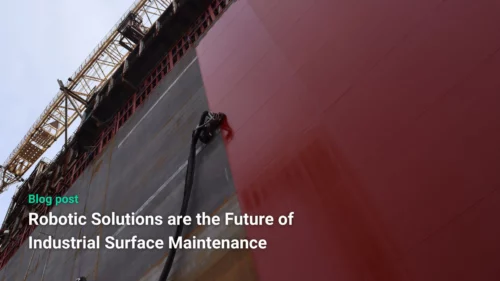Industrial surface maintenance robots are redefining how we clean, coat, and protect industrial infrastructures —such as steel storage tanks, ship hulls and offshore platforms.
From preventing corrosion to extending service life, maintenance processes play a key role in keeping infrastructure operational, safe, and efficient. However, in recent years, traditional methods—heavily reliant on manual labor—have increasingly shown their limitations.
This article explores how robotic technologies are transforming surface maintenance by increasing safety, precision, and sustainability across sectors like oil & gas, shipping, storage, and wind energy, paving the way for a new era in asset protection.

Why Manual Industrial Surface Maintenance Falls Short
From inspecting corrosion to blasting old coatings, applying new layers, and final quality checks, each step demands precision, consistency, and safety. Traditionally, teams of skilled technicians have shouldered this burden—climbing on scaffolds, wrangling high-pressure hoses, and toiling for hours in harsh environments.
While the dedication of these workers is commendable, the reality is that this is a demanding and hazardous job. Every day, many face serious safety risks—including working at extreme heights and exposure to toxic chemicals—especially in the maritime industry, where a single mistake offshore could have fatal consequences. The concerns exacerbate the growing shortage of such skilled technicians (1).
Manual methods introduce human error and variability (uneven coating thickness, overlooked corrosion spots), toxic waste (overspray, microplastics, VOC emissions), safety hazards, all of which add up to significant project delays.
Robotic systems are rewriting this playbook. By weaving autonomous platforms into every stage—inspection, preparation, coating application, and monitoring—companies are building a smarter, safer, data-driven maintenance ecosystem. Below, we explore how to integrate robots across the maintenance workflow, examine sector-specific solutions for storage tanks and maritime vessels, and spotlight emerging trends and success stories that underscore why industrial professionals—from asset owners to coating contractors—should be planning their own robotic deployments today.
Modern surface maintenance is undergoing a transformative shift driven by robotics, automation, and data integration.



